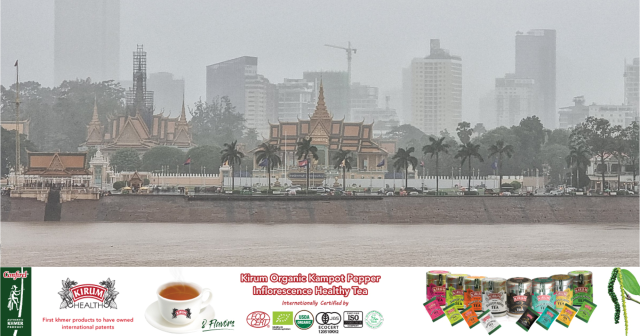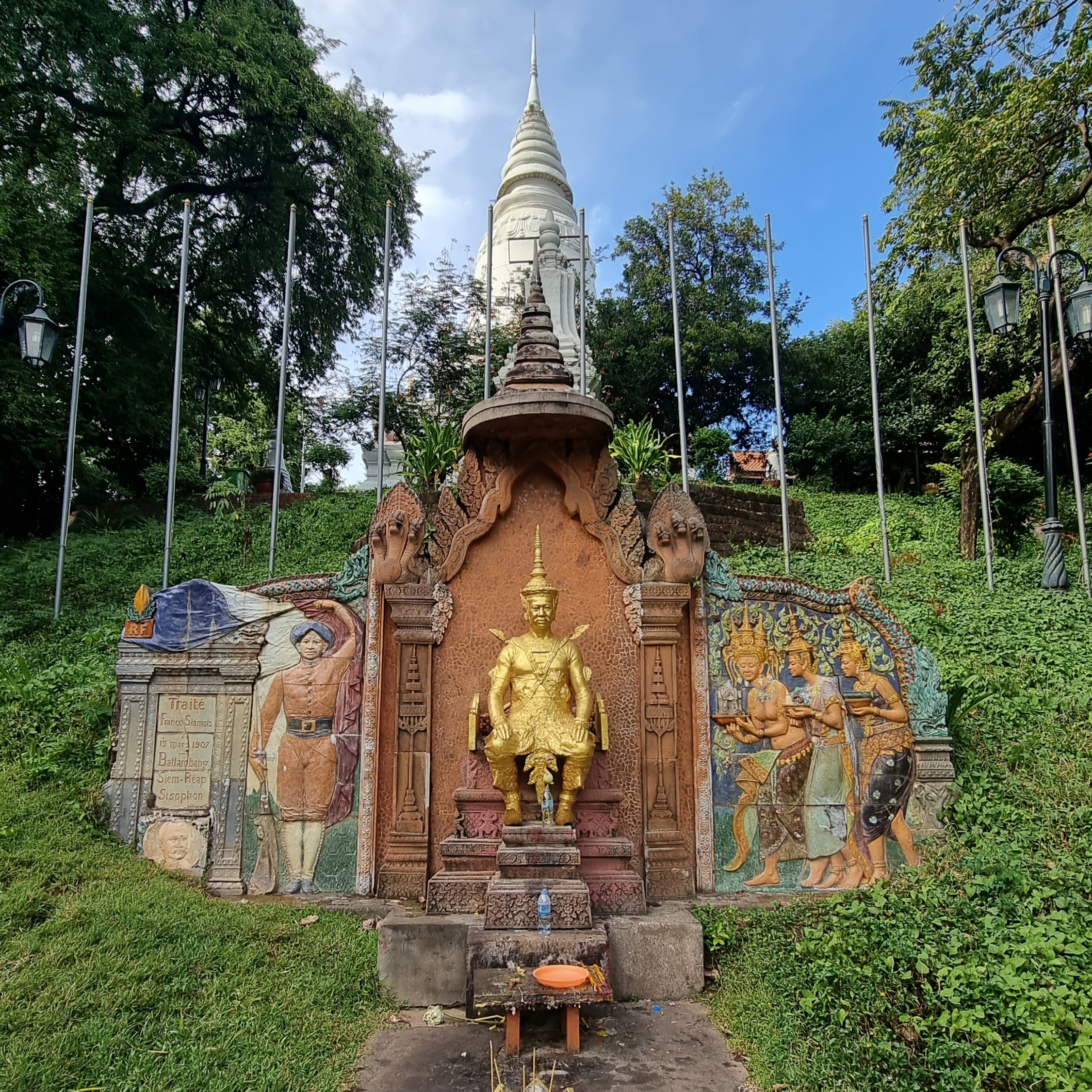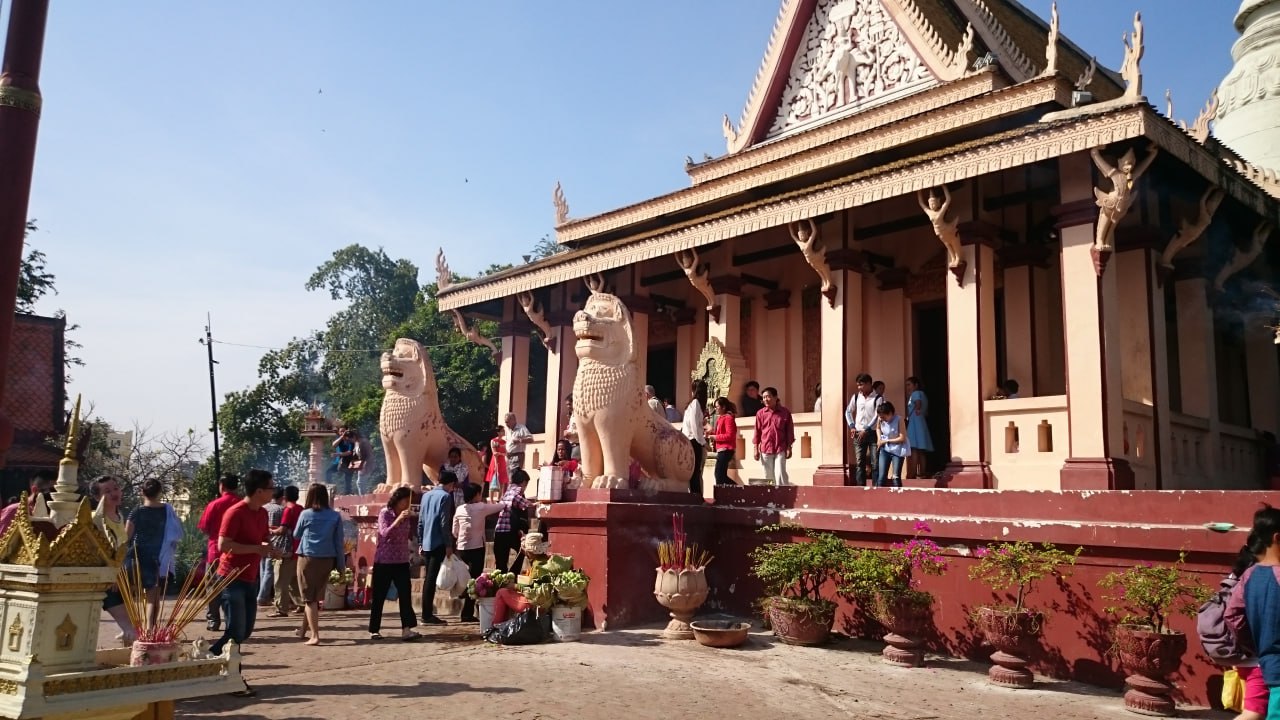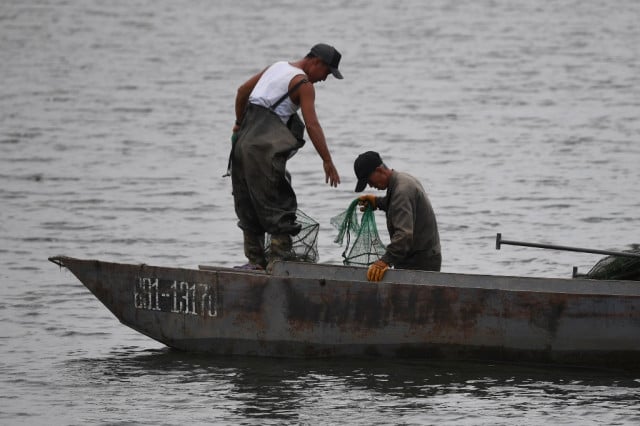How Did Phnom Penh Get its Name?

- By Cambodianess
- April 27, 2024 2:00 PM
Cambodia has a long and complex history of changing cities since its inception during the first century. Some early cities were in the areas of Angkor Borey, Sambor Prei Kuk, Angkor region, Longvek and Udong.
Phnom Penh was founded in 1434 during the reign of King Ponhea Yat. “Penh” was thought to be a senior woman who lived where the Upper Mekong, the Lower Mekong, the Tonle Sap and the Bassac rivers meet. Annually, some of these rivers reversed course like magic.

Caption: King Ponhea Yat statue at Wat Phnom tourism site.
One day in 1372, a downpour caused flooding. Daun Penh [Grandmother Penh] saw a koki tree that was swept away by a whirlpool. She called her neighbours to help pull the tree ashore. In the hollow trunk she found four small bronze Buddha statues and a stone deity.
Duan Penh was overjoyed and set up a small hut to represent the shrines temporarily. Later, she called on the neighbours to help build the mound into a hill and gradually, that hill became a mountain. The word Phnom means mountain.
Penh also commissioned the construction of a temple to house the Buddha statues. The stone statue was paraded to a monastery at the eastern foot of the mountain to another temple.

After the temple was built, Duan Penh invited monks to live at the foot of the mountain. From that time, the site was renamed “Wat Phnom Daun Penh” or “The pagoda mountain of grandma Penh”, now abbreviated to Wat Phnom. Her name and the mountain have become the name of the city.
The large grey stupa on top of Wat Phnom is also used to house the remains of King Ponhea Yat and the royal family. Before choosing this place as the capital, King Ponhea Yat built the first palace at the Chaktomuk river, also known as the “Four-faced river”, which is the present Royal Palace.
In 1497, the capital was relocated to Angkor. Through constant changes in history, the capital of Cambodia was relocated again and again.
In the reign of King Norodom in 1865, the new palace was built in Phnom Penh.
At first, Phnom Penh was just a small, quiet fishing village with houses made of thatch, bamboo or wood from tall trees. Later, the city experienced a series of developments. At the end of the 19th century, the French colonists did many things, such as digging dams, building roads, and building small bridges that made Phnom Penh one of the most beautiful cities in the region.

A district was built in the northern part of the city, and it was modelled on the French architectural style. It is a common sight to see many yellow buildings, synonymous with the French style, that still survive. The houses are built in rows with paths lined with plants on either side of the road. It was during this period that Phnom Penh became the “Pearl of Asia”.
At the beginning of the 20th century, Phnom Penh steadily expanded. In 1935, the construction of the Central Market, or Phsar Thmey, began. Visually striking and aesthetic, this market hosts a large dome in the middle with four large tentacle-like structures protruding toward.
The grand and ambitious concrete architectural structure, which is acclaimed by the international press for its modernity, is an important new step and it is also another development process of Phnom Penh.
After gaining independence in 1953 under the leadership of King Norodom Sihanouk, the head of state during the Sangkum Reastr Niyum period, many young Khmer architects also created many unique architectural works by combining the Khmer and the modern architecture.
It is these blended designs that give Phnom Penh the image of a modern city. The construction of an international airport and the route of Phnom Penh to Sihanoukville via rail have made Phnom Penh the most important economic and commercial centre.
When the Khmer Rouge came to power in 1975, Phnom Penh turned into a nightmare. As people were forcibly evacuated out of the city for almost four years, Phnom Penh became a ghost city. Infrastructure was destroyed, leaving a scene like an apocalyptic zombie movie.
At the dawn of 1979, Phnom Penh was liberated from this terrible situation and started to come back to life. Determined not to allow the city to fall into chaos again, the authorities and the people began to rebuild the country. However, at that time, they faced many difficulties.
Complete peace throughout the country and national reconciliation were only achieved in the late 1990s thanks to the policies of former Prime Minister Hun Sen. Since then, the restoration of Phnom Penh has gained rapid momentum, which has changed the city's landscape through various activities of construction sites.
Phnom Penh has also become an attraction for investors as well as tourists.
Phnom Penh has changed with beautiful streetscapes and is building its future through a variety of urban planning and expensive real estate projects that offer new opportunities for this "Pearl of Asia".
Right now, Phnom Penh houses around 2 million people. High-rise buildings have become a common sight and new bridges are being constructed to facilitate traffic flow between the land masses which are separated by the rivers.
Population hotspots have also decentralised as reclaimed land outside downtown gives more opportunities for infrastructure investment.
Almost 700 years later, Duan Penh, the granny who was curious about the floating koki tree, has been immortalised with a large statue of her erected on a raised foundation metres from the mountain she initiated.

Caption: Statue of Duan Penh situated across the street from Wat Phnom tourism site.
Sourced from the book “Phnom Penh: A Four-Faced City”















